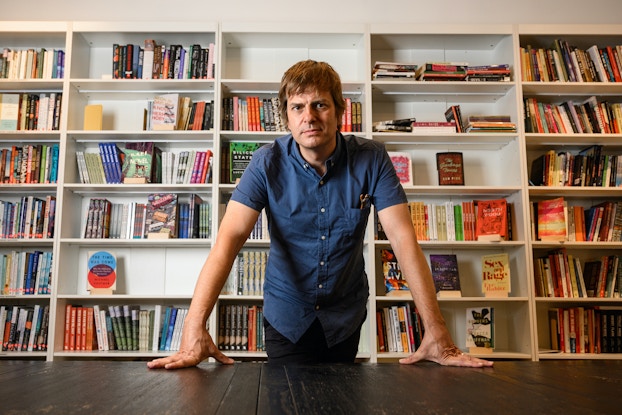
Three tips for becoming a profitable business:
- The founders of startups Bookshop.org, New Masters Academy and FitVine Wine count calculating the optimum cost structure for your business as foundational to reaching profitability.
- Tapping into communities that support a company’s mission, such as consumers that favor shopping at local businesses, can also pave the path to profitability.
- Marketing comes at a cost but is key to success, and many small business owners report wishing they had invested more in marketing early on, according to a Bredin and Kabbage report.
For many startups, achieving profitability can be an elusive goal, and in some cases, it is a goal that is never achieved.
Profitability is a function of many variables, including the company’s cost structure. A home-based business, for example, will likely have a lower threshold of profitability than one that requires significant infrastructure.

Interested in a small business membership?
Find out how the U.S. Chamber of Commerce can help your company grow and thrive in today's rapidly-evolving business environment. Connect with our team to learn how a small business membership can benefit your bottom line and help you achieve your goals.
Some businesses are able to report profitability almost immediately, but for many, it takes a few years to reach that goal. A survey of 500 small business owners by research firm Bredin, in collaboration with alternative lender Kabbage, found that 68% of established business owners said they reached profitability within the first year, and 84% said they were profitable within four years.
“Only 8% reached profitability after their fifth year in business, giving strong indication that the first four years are truly make-or-break years for any new company,” the report concluded.
Bookshop.org, New Masters Academy and FitVine Wine reached this coveted milestone by staying lean, employing clever marketing and meeting their customers where they shopped.
Bookshop.org, an online marketplace for independent bookstores, leveraged consumer interest in supporting local businesses during the pandemic to generate word-of-mouth publicity, while keeping its staffing levels to a minimum.
New Masters Academy, an online learning platform for art classes, built up an extensive content library of videos and reference photos for artists before it went live in 2013, and by that time had enticed enough subscribers to commit to joining at a special rate.
The founders of FitVine Wine, meanwhile, had no experience in the beverage industry when they introduced their “mindful” approach to winemaking, but listened carefully to customers and their retail partners to grow their business successfully and fill a gap in the industry.
Each of these businesses, although operating with very different business models, found that the formula for success revolved around understanding the needs of their end users.
Here, the founders of Bookshop.org, New Masters Academy and FitVine Wine share their journeys to profitability.
Bookshop.org, New Masters Academy and FitVine Wine reached this coveted milestone by staying lean, employing clever marketing and meeting their customers where they shopped.
Bookshop.org CEO, Andy Hunter: Tap into consumers’ interest in supporting local business
We launched Bookshop.org on Jan. 28, 2020, with only enough cash for eight months of operations, so our business plan optimistically projected we would be profitable by fall 2020. It was a bit stressful, and I had a few sleepless nights when I thought we couldn't possibly make it. However, we reached profitability in April 2020, just three months after our launch.
We stayed very lean. We launched with four employees; by the time we reached profitability, we had added two interns. We prioritized growth through press and word of mouth, going to social media and asking people to spread the word if they believed in our mission to help independent bookstores.
I hired an independent publicist and worked closely with her to get as much press as possible in the first six months. A couple of articles about us went viral.
As the pandemic hit, we onboarded over 1,000 bookstores, which started selling books through Bookshop.org. We leveraged the communities that rallied around the bookstores on our platform. As a socially conscious alternative to Amazon that supports local business, many consumers who were looking for ways to help during COVID discovered us and spread the word.
As we grew, we prioritized customer service, hiring a team of 18 people—mostly booksellers who had been laid off in the pandemic. Personal attention and knowledge about books helped ensure that our early customers came back. We now have over 1.4 million customers and counting. While we have been profitable since our third month, we are not very profitable, because by design we give away most of our profit margin to local bookstores. In 2020, we gave back 80% of our potential profit to our community.
[Bookshop.org Is Helping Independent Booksellers Stay in Business Amid COVID-19]

New Masters Academy founder and executive director, Joshua Jacobo: Lock in subscribers with early deals and strong content
From February 2012 to March 2013, when the website [for online art classes] launched, we invested in building up our library of content — video courses, photos, 3D scans of people and sculptures — as well as building the custom website and tools. Our first profitable month was the first month of the launch of the website in March 2013.
As a subscription business model, building the content library to a certain point before launch was paramount. For us, we decided that 100 hours of video content, 50,000 reference images for artists to use and a dozen 3D models were enough to justify the subscription for users.
Secondarily, we had an online pre-launch marketing campaign, including an early-access program that incentivized users to subscribe early. Our marketing campaigns relied heavily on our Facebook page updates and email updates featuring instructor artwork and free tips for artists.
We also offered a special ‘locked-in’ subscription [rate] for early adopters. Any subscriber who signed up during the early period would retain full access to the website at their locked-in rate, as long as their subscription didn’t lapse. We honored that and there are to this day still early adopters with active subscriptions at the initial, quite low, rates.

FitVine Wine co-founders, Mark Warren and Tom Beaton: Market to your customers in the channel where they shop
It took FitVine three-and-a-half years to become profitable. This was on par with our original business plan.
We had started FitVine Wine strictly via direct-to-consumer, and it is important to note that the threshold of profitability for the company came after only our second year in retail!
The rapid expansion throughout the U.S., along with our retail-focused marketing, allowed us to become profitable by year's end. From day one, our No. 1 focus was our consumer. They helped drive that growth at retail as they became our sales team.
[DTC Alcohol Marketplaces Are Helping Small Merchants Uncork Digital Sales]
One critical takeaway: Invest in marketing at the early stage of a business venture
The Bredin/Kabbage survey, in fact, found that many small business owners report that they should have invested more in marketing early on in the life cycle of their business. Respondents reported that marketing accounted for 7% of all costs in their first year, but business owners wish that figure had been four times that total, or 28%. And, although spending on marketing as a percent of costs increased to 13% in years two through four, business owners still wished they had spent nearly double that amount, or 25%.
“Business owners rank finding new customers as their No. 1 challenge over time, significantly outweighing cash flow and competition concerns,” the report found.
CO— aims to bring you inspiration from leading respected experts. However, before making any business decision, you should consult a professional who can advise you based on your individual situation.
Follow us on Instagram for more expert tips & business owners’ stories.
CO—is committed to helping you start, run and grow your small business. Learn more about the benefits of small business membership in the U.S. Chamber of Commerce, here.







